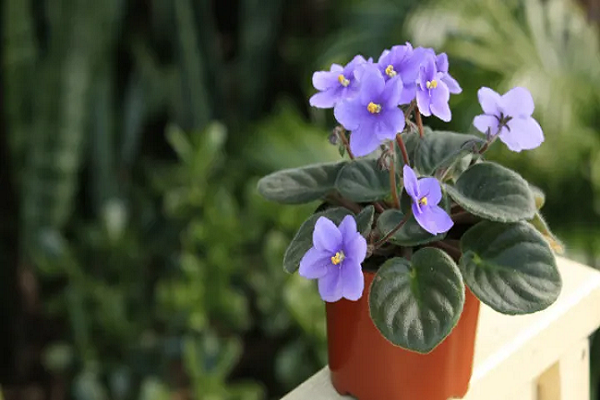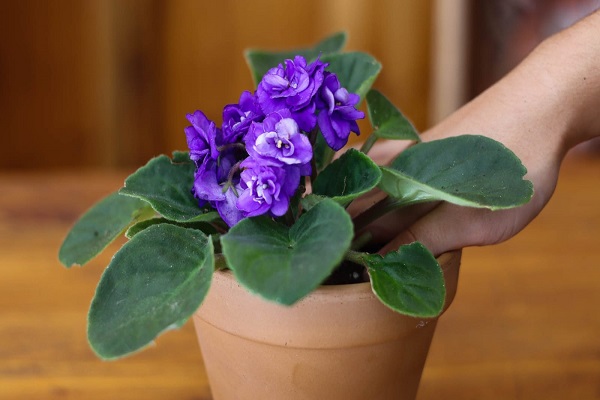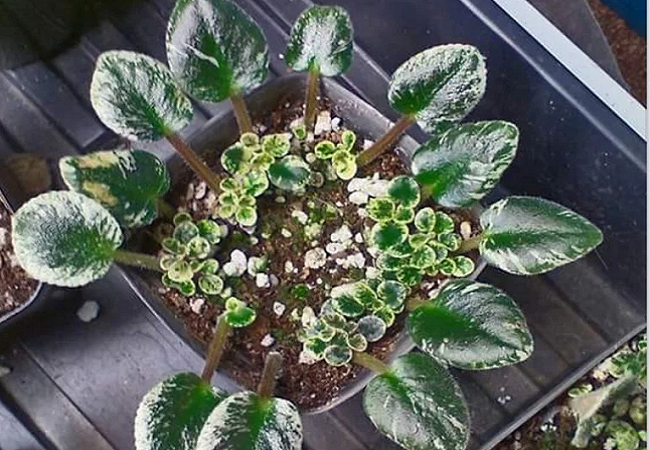Last Updated on May 17, 2023 by Md Deloar Hossain
African violets are cherished houseplants, admired for their vibrant blooms and resilience. Propagating African violets in soil is a rewarding endeavor that allows you to multiply your collection from a single leaf cutting. This comprehensive guide will ex valuable insights into soil-based propagation, sharing essential tips and techniques to help you successfully grow new African violet plants while understanding the unique challenges and joys of this fulfilling process.
Quick Navigation
- 1 Critical Components of African Violet Propagation in Soil
- 2 Step-by-Step Guide to Propagating African Violets in Soil
- 2.1 Inserting The Leaf-cutting Into The Soil
- 2.2 Providing Optimal Growing Conditions
- 2.3 Monitoring And Maintaining The New Plants
- 2.4 Common Mistakes and Troubleshooting
- 2.5 Overwatering and Root rot
- 2.6 Insufficient Light And Leggy Growth
- 2.7 Encouraging Faster Root Development
- 2.8 Transplanting New Plants
- 2.9 FAQs
- 2.10 What Is The Quickest Way To Propagated African Violet?
- 2.11 How Do You Root African Violets In Soil?
- 2.12 How Long Does It Take To Propagate African Violets?
- 2.13 Can You Put African Violet In Water To Root?
- 2.14 What Is The Best Way To Propagate Violets?
- 3 Conclusion
Critical Components of African Violet Propagation in Soil

Selecting The Right Soil Mix
Importance of well-draining soil: African violets require wells to prevent root rot, encourage robust root development, and promote overall plant health. Components of an ideal African violet potting mix: An optimal blend consists of peat moss, perlite, and vermiculite, providing the perfect balance between water retention and drainage.
Choosing Healthy Leaves For Propagation
Identifying suitable leaves: Opt for mature, robust leaves from the middle section of the plant that show no signs of disease or pests. Proper leaf-cutting techniques: With clean, sharp scissors or a knife, cut the leaf and its petiole (stem) at a 45-degree angle, leaving approximately 1 into 1.5 inches (2.5 to 3.8 cm) of the petiole intact.
Preparing The Soil And Container
Soil sterilization and moisture: Sterilize the soil mix by microwaving it for 5 minutes or baking it in an oven at 180°F (82°C) for 30 minutes. Moisten the soil slightly before planting the leaf cutting. Container selection and drainage considerations: Select a small, clean pot with drainage holes, ideally 2-3 inches (5-7.6 cm) in diameter, and use a saucer to catch excess water.
Step-by-Step Guide to Propagating African Violets in Soil

Inserting The Leaf-cutting Into The Soil
Techniques for ensuring successful rooting: Dip the cut end of the leaf petiole into rooting hormone powder, gently tap off the excess, and insert it into a small hole in the soil mix, about half an inch (1.3 cm) deep. Proper depth and insertion angle: Position the leaf at a 45-degree angle, ensuring the leaf blade does not touch the soil.
Providing Optimal Growing Conditions
Temperature and humidity requirements: Maintain a consistent temperature of 70-75°F (21-24°C) and humidity levels of around 60-70%. Cover the pot with a too much clear plastic bag or place it in a propagation tray with a clear lid to create a humid environment. Light exposure and intensity: Position the pot in a location with bright, indirect light for 12-14 hours per day, avoiding direct sunlight, which can scorch the leaves.
Monitoring And Maintaining The New Plants
Watering and fertilization schedules: Water the soil when it feels dry, using room temperature water to avoid shocking the plant. Fertilize with a balanced, water-soluble fertilizer, diluted to half strength, every 4-6 weeks. Identifying and addressing potential issues: Monitor your plants for signs of pests, disease, or other problems, such as yellowing leaves or a lack of growth. Address these issues promptly by adjusting care or consulting a trusted resource for guidance.
Common Mistakes and Troubleshooting

Overwatering and Root rot
Signs of overwatering: Symptoms include yellowing leaves, wilting or mushy, discolored roots, indicating overwatering and potential root rot. Remedial actions to save affected plants: Carefully remove the plant from the pot, trim away damaged roots with clean, sharp scissors, and replant it in a fresh, well-draining African violet potting mix. Adapt your watering schedule to prevent future issues.
Insufficient Light And Leggy Growth
Recognizing inadequate light conditions: Leggy, elongated growth with few blooms or pale leaves suggests insufficient light exposure. Adjusting light exposure for optimal growth: Gradually increase light exposure, ensuring the plant receives bright, indirect light for 12-14 hours daily. A fluorescent or LED grow light can provide consistent light, especially during darker months.
Additional Tips and Tricks for Successful African Violet Propagation
Encouraging Faster Root Development
Rooting hormone use: Applying a rooting hormone to the cut end of the leaf petiole can speed up root development and increase the likelihood of successful propagation.
Bottom heat application: Positioning the pot on a heat mat set to around 70°F (21°C) can stimulate faster root growth and create a more favorable environment for propagation.
Transplanting New Plants
Identifying when to transplant: Once the new plants have developed a healthy root system and have at least two sets of true leaves, they are ready for transplanting.
Techniques for minimizing transplant shock:
- Thoroughly water the plants before transplanting.
- Handle the roots gently.
- Transplant them into slightly larger pots, ideally 4-5 inches (10-12.7 cm) in diameter, filled with fresh African violet potting mix.
FAQs
What Is The Quickest Way To Propagated African Violet?
The fastest way to propagateed African violets is typically through leaf cuttings placed in a soilless medium, such as perlite, vermiculite, or a mix of both. Using a rooting hormone and providing bottom heat can further accelerate the rooting process.
How Do You Root African Violets In Soil?
To root African violets in soil:
- Select a healthy, mature leaf and cut it with its petiole at a 45-degree angle.
- Dip the cutting end in rooting hormone, as well as insert the petiole into a moist, well-draining soil mix.
- Provide bright, indirect light, and maintain consistent temperature and humidity to encourage root growth.
How Long Does It Take To Propagate African Violets?
The time it takes to propagate African violets varies depending on the method and growing conditions. Typically, roots develop within 3-4 weeks, and new plantlets emerge after 6-8 weeks.
Can You Put African Violet In Water To Root?
Yes, you can root African violet leaves in water. Place the cut end of the petiole in a small container filled with water, using a piece of foil or plastic wrap to suspend the leaf above the water without submerging it. Roots should start to form within 2-4 weeks, after which you can transfer the cutting to a pot with soil.
What Is The Best Way To Propagate Violets?
The best way to propagate violets depends on individual preferences and resources. While water propagation is simple and allows you to observe root growth, soil-based propagation is generally more effective in promoting healthy root systems and smooth transitions to potted plants.
Conclusion
Propagating African violets in the soil is a fulfilling and gratifying process that allows you to expand your collection and share the joy of these lovely plants with others. By adhering to the steps outlined in this guide and understanding the importance of proper care, you can significantly increase your chances of success. Embrace the learning experience, and relish the satisfaction of watching your African violets grow and thrive.

My name is Md Deloar Hossain and I’m the creator of Club Gardening, designed for all your gardening ideas, gardening product reviews, and a place to help you find the best gardening experience possible.


